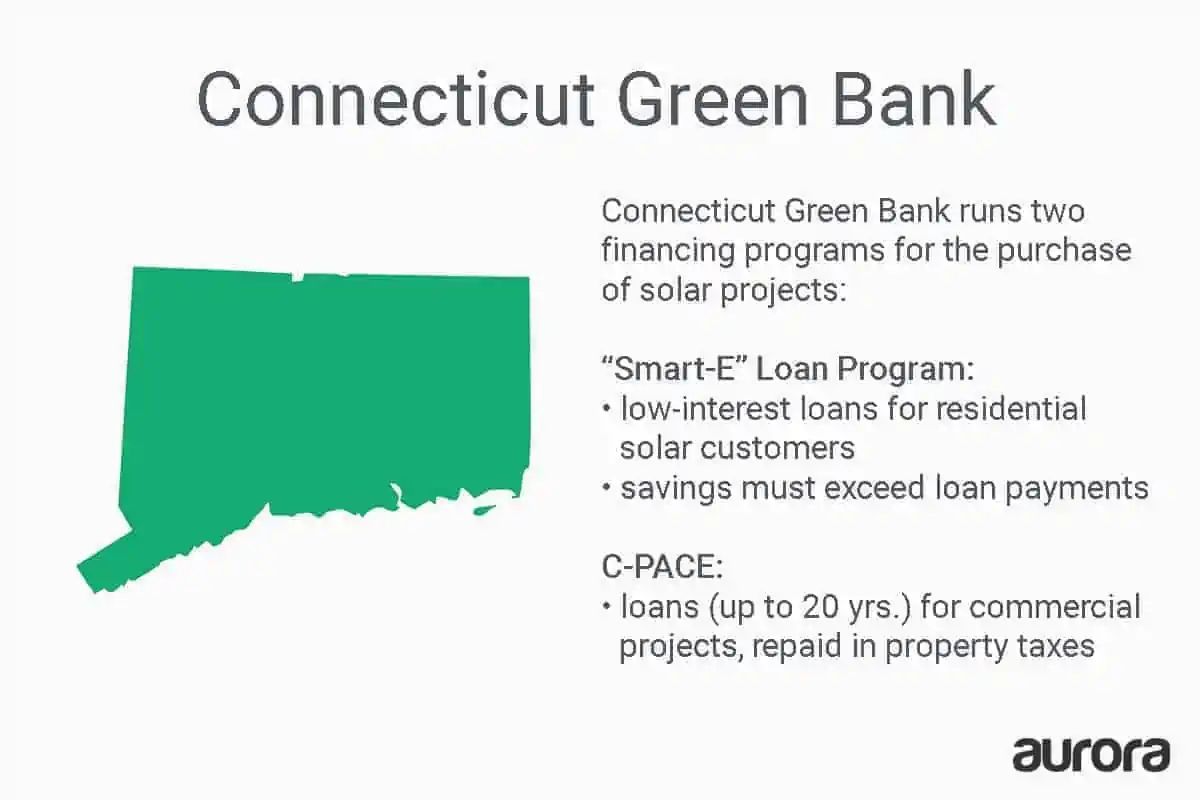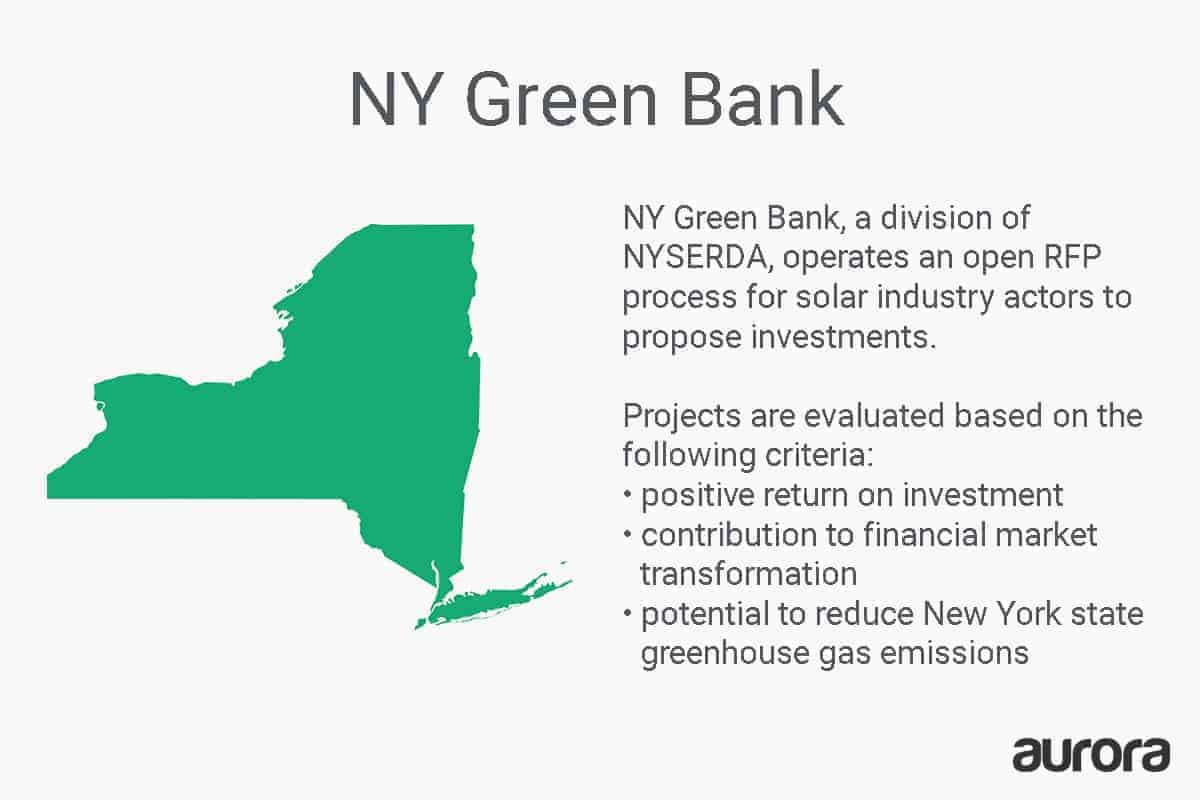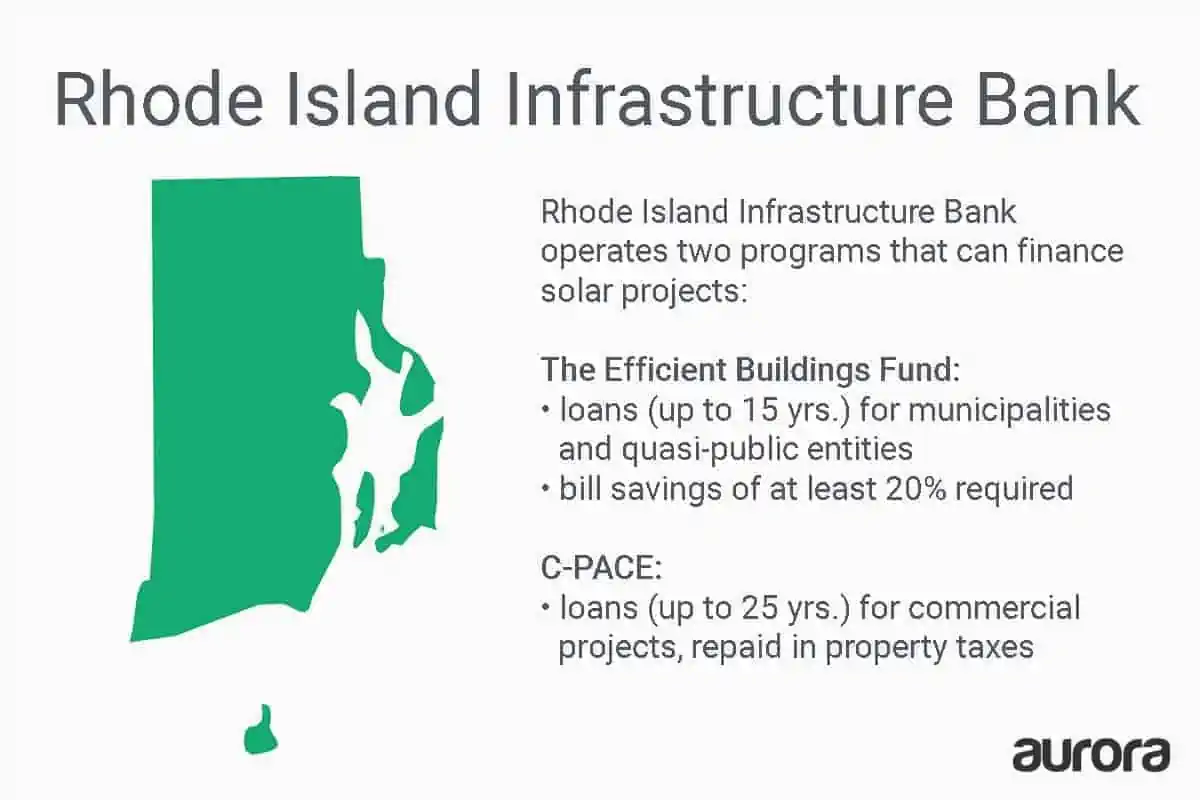The solar industry has come a long way since its early days when solar PV was a rare novelty. Robust markets have sprung up in many U.S. states—but solar is still far from mainstream. As any solar contractor knows, solar installations remain out of reach for many interested customers due to the high upfront cost.
For other expensive purchases, like a car or house, financing is relatively accessible, putting these resources within reach for much of the population. But financing for solar is often hard to secure because many private lenders are unfamiliar with and hesitant to finance clean energy transactions. This lack of capital has been a major barrier to the growth of the industry. But that’s starting to change in some states, through the work of green banks.
Green banks are a new type of finance institution established by governments to accelerate the growth of clean energy markets, as discussed in our overview article. For this series, we spoke with staff at green banks around the U.S. to determine what programs solar contractors in different states should be aware of and offer insight into the diversity of approaches green banks are applying to help solar markets grow.
| Interested in a particular green bank? Choose a state to jump ahead to its green bank programs: Connecticut, New York, Rhode Island, California, Hawaii |
A core characteristic shared by green banks is that they use limited public funds to drive greater private sector investment in clean energy projects. They do this by offering a variety of services that mitigate risk for private lenders to provide financing for solar and other clean energy projects, since these sectors are relatively new to most traditional banks. While green banks share a common purpose, the structure of their programs—from the types of products they offer to the customers they serve—varies depending the local context.
In this article, we dive into green banks on the east coast of the United States, highlighting the types of products they offer, and the programs solar installers should know about. In the second part of this series, we explore the programs of green banks on the west coast of the U.S. and in Hawaii.
Connecticut Green Bank
Established in 2011 by Connecticut Governor Dannel Malloy as the first green bank in the country, the Connecticut Green Bank has had dramatic success growing the state’s clean energy markets. It reports that for every dollar of public funds invested at least $6 of private investment in clean energy have been deployed, totalling over $1 billion of cumulative investment in more than 20,000 clean energy projects. This has enabled over 215 megawatts of clean energy, 2.6 million tons of avoided of emissions, and reductions of 20-30% in the cost of renewable energy in the state! It has also driven the creation of an estimated 13,000 clean energy jobs.
The bank offers two key solar financing programs of relevance to contractors operating in the Connecticut: its “Smart E-Loan” for residential customers, and its “C-PACE” program for commercial customers. By covering the upfront cost and offering low interest rates, these programs can make a solar purchase much more feasible for prospective customers.
“Smart-E” Loan Program
Through its Smart-E Loan program , the Bank partners with local banks and credit unions in the state to offer low-interest, no money down loans for homeowners to cover the cost of a solar installation (as well as other home energy upgrades).
C-PACE
Connecticut’s Commercial Property Assessed Clean Energy (C-PACE) program offers loans to commercial property owners to cover 100% of the cost of installing solar or other clean energy technologies. Eligible projects must have a savings-to-investment ratio greater than one—meaning that bill savings exceed loan payments so customers save money immediately. This is made easier by the fact that the loans can be repaid over up to 20 years. Like other PACE loans, the loan is repaid as part of property taxes on the site and if the property is sold the loan transfers to the new owner, requiring no pay-off upon sale.
Get Involved
Connecticut Green Bank maintains a database of contractors that are approved to offer Smart-E or C-PACE projects. Registration is simple; contractors must attend a training, be properly licensed and insured, and have no negative Better Business Bureau ratings. Additionally, the C-PACE program is introducing badges that acknowledge a contractor’s level of experience with the program, giving experienced contractors an edge in connecting with prospective C-PACE customers.
NY Green Bank
The green bank of New York state, NY Green Bank, was established in 2013 as the second in the nation. Its approach to growing clean energy markets differs from the programmatic approach of many other green banks. It does not have set programs, rather it operates an open RFP process and has flexibility and discretion in the types of financial services it can offer depending on what strategy would be most advantageous in a particular case.
Explaining her institution’s role, Caroline Angoorly, Chief Operating Officer of NY Green Bank, notes: “NY Green Bank is positioned at the near-frontier of clean energy financing markets,” working to address market barriers and financing gaps in clean energy investment. “These types of gaps and barriers exist where clean energy financing structures diverge from traditional project financing approaches and may involve structures, parties, credits, technologies and transaction sizes which may be less well known or common.”
NY Green Bank focuses on multi-million dollar transactions with businesses, such as solar developers and financiers, alongside private sector lenders. To be considered for funding, projects must have the potential to drive market transformation, in addition to reducing the state’s greenhouse gas emissions and providing a positive financial return for the bank.
Explaining how the bank evaluates potential transactions, Angoorly notes that projects must meet three minimum investment criteria:
- “Transactions will have expected financial returns such that revenues of NY Green Bank on a portfolio basis will exceed operating costs and expected portfolio losses – i.e., products are provided at market rates;
-
Transactions will contribute to financial market transformation (e.g., multiples of capital mobilized to fund total project costs and potential to drive the type of volume, including scalability and replicability, that can materially and sustainably expand markets); and
- Transactions will have the potential for energy savings and/or clean energy generation that will contribute to greenhouse gas (GHG) emissions reductions in support of New York’s clean energy policies.”
As of the last fiscal quarter, NY Green Bank had committed over $440 million in clean energy investments in the state, including loans of $20 million to Vivint Solar to expand power purchase agreements (PPAs) in New York, $12 million to Cypress Creek Renewables to finance interconnection fees for up to 72 community solar projects, and $50 million to Solar Mosaic to offer solar loans.
Get Involved
Because NY Green Bank operates at a wholesale level, they do not offer retail-level solar financing with which small and medium-sized solar contractors can connect customers. However, large solar companies may want to consider applying for NY Green Bank funding to expand their operations in New York state when they encounter gaps in the financing available from private lenders.
Rhode Island Infrastructure Bank
The Rhode Island Infrastructure Bank (RIIB) was created by expanding the responsibilities of an existing state institution, Rhode Island’s Clean Water Finance Agency, to include clean energy financing. As Michael Baer, Managing Director of the Rhode Island Infrastructure Bank, explains, “We have a broader mandate than typical green banks, such as those in New York or Connecticut; we provide structured financing to a handful of sectors.” In addition to its programs that fund clean energy projects like solar PV, RIIB financing supports projects for drinking water and wastewater treatment facilities, transportation infrastructure, and the restoration of brownfields (contaminated land).
RIIB offers two programs of relevance to solar contractors in Rhode Island: its Efficient Buildings Fund (EBF) and its Commercial Property Assessed Clean Energy (C-PACE) program.
Efficient Buildings Fund
The Efficient Buildings Fund is a financing program for the purchase of solar PV and energy efficiency projects. The program provides long-term loans (up to 15 years) for municipalities and quasi-public entities, such as public housing, school districts, and public universities. In addition to the cost of a solar installation the loans can also cover related upgrades needed for the project, such as a new roof for an old building. Like Hawaii’s solar loan program, projects are required to result in at least a 20% reduction in utility bills for the property to be eligible for funding.
Because these tax-exempt public customers can’t take advantage of tax credits or accelerated depreciation that make solar more accessible to other types of customers, RIIB’s programs are designed to help put solar within their reach. Additionally, as Baer explained, municipalities are often disproportionately impacted by the high cost of energy in Rhode Island because they tend to have many old buildings. Solar contractors in conversations with prospective municipal customers may want to highlight this source of funding.
C-PACE
Like Connecticut’s Commercial PACE loan program (discussed above), Rhode Island’s C-PACE program provides a means for owners of commercial buildings in participating municipalities to install solar with no upfront payment and long-term repayment over up to 25 years through the building’s property taxes. (The program can also provide funding for other types of projects like energy efficiency and water conservation upgrades or electric vehicle charging stations.) Through this program, RIIB connects eligible projects with funding from private lenders, providing oversight and standardization so that lenders can be comfortable with the quality of the projects.
Get Involved
Any appropriately licensed solar contractor in Rhode Island can act as the contractor for an Efficient Buildings Fund project. To become an approved contractor for C-PACE projects , companies can submit an application , which includes demonstration of appropriate licensing and references. Companies must also complete a training before being listed in the program’s contractor directory.
Green banks provide important opportunities for solar contractors to serve new customers who might not be able to consider a solar installation without financing options. If there is a green bank where you work, it’s a good idea to get familiar with its programs. In Part 2 of this series, we detail additional green bank programs in California and Hawaii. We also examine indications that the green bank model is just getting started—including important announcements from Connecticut Green Bank and NY Green Bank about their efforts to support other states interested in launching their own green banks!


